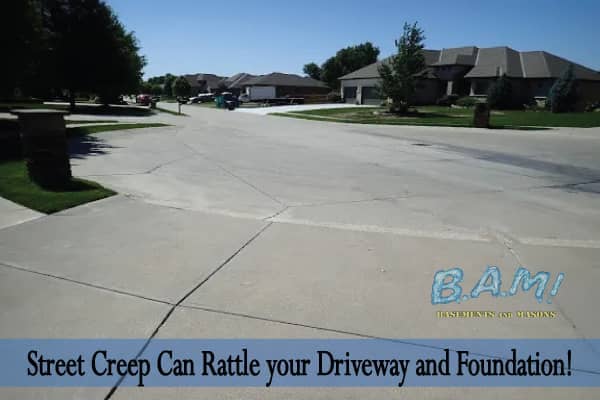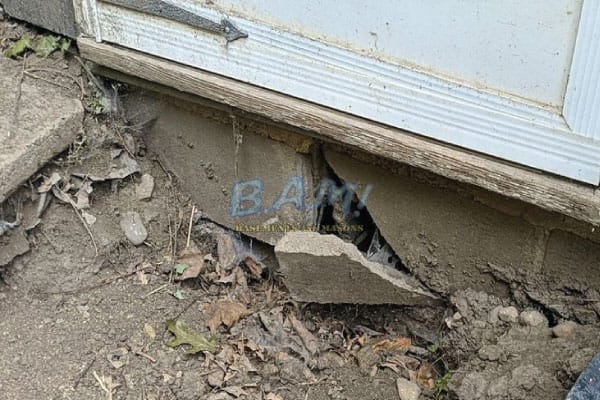Some Known Questions About Best Basement Waterproofing.
Table of ContentsGet This Report about Best Basement WaterproofingThe 15-Second Trick For Best Basement WaterproofingIndicators on Best Basement Waterproofing You Should KnowBest Basement Waterproofing - The FactsHow Best Basement Waterproofing can Save You Time, Stress, and Money.
AdvantaClean's qualified specialists and specialists will situate the water resource. If wall or piece cracks are present, we will inject polyurethane and epoxies into the fractures and secure the concession, preventing further dampness from going into.
If there's condensation outside of the foil, you have high humidity in your basement. Fix it with a mobile area dehumidifier or a whole-house humidifier system rather than waterproofing items. If the foil has condensation on the inside surface (next to the wall), the dirt around your home might be normally damp from a high water table or poor dirt drainage.
You can waterproof simply your interior wall surfaces, which might address the trouble. Once they dry out, they stick permanently to concrete and stonework wall surfaces.
Best Basement Waterproofing Fundamentals Explained
Concrete water-proof finishings can't be used to previously repainted surfaces; inspect the label. Understood as densifiers, they are appropriate only for wall surfaces that have not been repainted or secured.
You brush, roll, or spray it on much more thickly one gallon covers just 75 square feet, not the 300 square feet regular with common paint. Water-proof paint is fine for do it yourself application. You can use it over painted surfaces, and paint over it once it's cured (one gallon expenses $37).
It can set you back $10,000 to $15,000, depending upon the work needed. Exterior waterproofing includes excavating all around your house fully depth of the structure walls, after that mounting a waterproof finishing or membrane layer topped by drain panels. The panels offer an easy path for water to move to an exterior French drain at the end of your structure.
We have actually all been captured in a storm without any umbrella or raincoat (Best Basement Waterproofing). And it's constantly a dish for catastrophe: everything's wet, your coiffure is messed up, and points are getting stuffy. A basement without waterproofing is type of like that. Minus the ruined coiffure component. Your basement doesn't intend to undergo a downpour without correct defense just as much as you do not intend to.
Not known Incorrect Statements About Best Basement Waterproofing
Yet if you've done your read here study, you would certainly understand there are two kinds of waterproofing: exterior and interior. It can get perplexing what they both mean, which one's a better financial investment, and what will actually keep the water out. Don't stress, we placed with each other this blog to conveniently define both approaches for you and go over the pros and disadvantages of each.
Exterior waterproofing is a waterproofing approach that involves securing your home from the outside. It's kind of like a moat around a castle. It entails excavating a trench around your whole home down to the structure (about 8 to 10 feet down). The foundation walls are then cleaned, sealed, and covered with a water-proof membrane layer or sealant.

The Best Basement Waterproofing Ideas
It's a much more involved procedure that requires digging up your yard, which is expensive and lengthy. Outside waterproofing includes removing whatever bordering your home, consisting of patios, driveways, pathways, landscape design, a/c units, decks, and more. If any one of the work was done inaccurately and water is still entering your basement, there isn't much you can do to remedy or repair it.
Inside cellar waterproofing involves waterproofing from the inside. Any water that leaks into your basement is redirected before it touches your floor. It's kind of like using a raincoat under your clothing. It includes 2 things: a water drainage track and a sump pump. It works by sealing the inside of your basement wall surfaces and floorings so water that attempts to see this site get in is channeled out through a sump pump.
It's an effective method to water resistant your basement. The drawback of interior cellar waterproofing primarily has to do with the installation procedure.
The Ultimate Guide To Best Basement Waterproofing
Finally, exterior and interior basement waterproofing are both reliable techniques of safeguarding your home from water damage. Outside waterproofing develops have a peek here a barrier that protects against water from entering your home, while indoor waterproofing reroutes water that does enter your home. And it's essential to note that exterior waterproofing is a pricey and turbulent installation procedure when compared to interior waterproofing.
Whichever approach you select, ensure you choose a reliable and reliable professional for the task. Both techniques require seasoned workers to handle the job. If you have any kind of concerns concerning cellar waterproofing, please connect to us. And if you're in our service location and have water in your cellar, contact us for a cost-free, no-obligation home assessment.
You can fill out our type below, begin a conversation in the bottom right-hand edge, or call us at 1-800-827-0702.